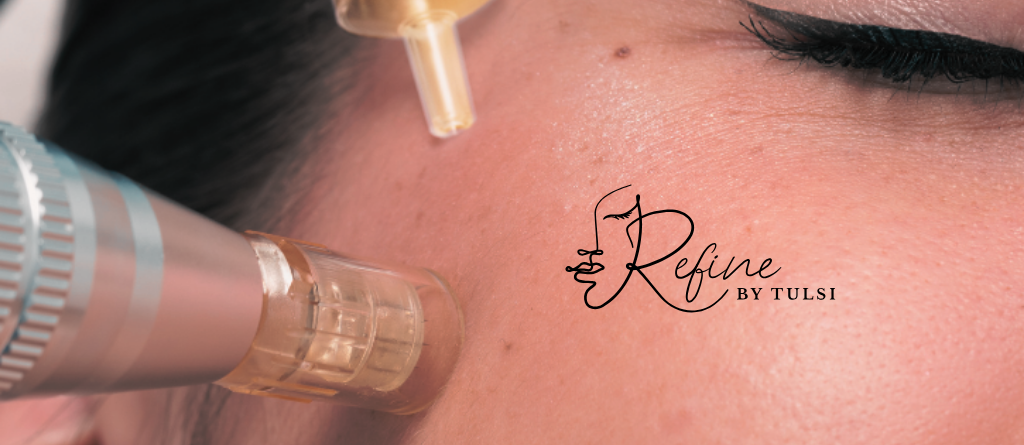In the world of regenerative medicine and aesthetic treatments, Platelet-Rich Plasma (PRP) and Platelet-Rich Fibrin (PRF) are two popular options for rejuvenation, healing, and collagen stimulation.
While both treatments utilize the patient’s own blood to promote natural healing, PRF is often considered the next-generation version of PRP. Below, we’ll dive into the key differences between PRP and PRF, and explain why PRF requires a higher level of expertise and should only be performed by trained clinicians.
What is PRP?
Platelet-Rich Plasma (PRP) is a regenerative therapy that uses concentrated platelets from the patient’s blood. A small blood sample is taken, and the plasma containing the platelets is separated from the rest of the blood using a centrifuge. PRP is rich in growth factors that aid in tissue repair and collagen production, making it an effective option for improving skin texture, reducing fine lines, and stimulating hair growth.
What is PRF?
Platelet-Rich Fibrin (PRF) is a newer, more advanced treatment compared to PRP. Like PRP, PRF uses the patient’s own blood, but the process for preparing PRF is different. PRF is spun at a lower speed, allowing for the collection of higher concentrations of platelets, growth factors, white blood cells (leukocytes), and stem cells. This slower process also forms a fibrin matrix that allows for the gradual release of growth factors, providing a prolonged regenerative effect.
Key Benefits of PRF:
- Contains higher levels of platelets and growth factors than PRP.
- No additives are used, making it a more natural and holistic option.
- Leukocytes and stem cells enhance healing and tissue regeneration.
- Slow release of growth factors for long-lasting benefits.
Common Uses of PRP and PRF:
- Skin rejuvenation for fine lines and wrinkles
- Hair restoration in cases of hair thinning and hair loss
- Microneedling with PRP for enhanced skin renewal
- Acne scar reduction by stimulating collagen production
Why Does PRF Requires a Higher Level of Expertise?
Although PRP and PRF seem similar, PRF requires a more specialized skill set for several reasons:
- Lower Speed Centrifugation: PRF is spun at a much lower speed than PRP to ensure the fibrin matrix forms properly. The slower spin maintains more growth factors, platelets, and stem cells but also requires precise handling during extraction. Any mistake during this process could result in a suboptimal fibrin matrix.
- No Anticoagulants: Unlike PRP, which uses anticoagulants to prevent clotting, PRF is processed without additives. This makes the procedure more challenging because the blood naturally clots during the process. A highly trained clinician must handle the product with great care and speed to ensure the right consistency and effectiveness, making the process more delicate and prone to errors if done by someone inexperienced.
- Fibrin Matrix Formation: The creation of the fibrin matrix is crucial in PRF, as it acts as a scaffold that traps the platelets and growth factors, allowing for sustained release over time. This requires proper handling and timing, which only experienced professionals can execute effectively.
- Depth of Application: PRF needs to be injected at precise depths, depending on the treatment area, such as the under-eye region, face, or scalp for hair restoration. Incorrect application could lead to complications, including poor results, lumps, or overstimulation of tissue. This is why only clinicians with an in-depth understanding of the anatomy and the PRF technique should administer the treatment.
- Patient Suitability: Not everyone is an ideal candidate for PRF. A skilled physician or aesthetic specialist will be able to evaluate whether a patient is better suited for PRP, PRF, or another regenerative treatment based on individual skin type, medical history, and treatment goals.
PRP vs PRF: Which One is Better for You?
- PRP is ideal for those seeking a quick recovery with immediate but short-lived results. It’s widely used for skin rejuvenation, hair restoration, and microneedling treatments.
- PRF offers longer-lasting results thanks to the slow release of growth factors and higher concentration of healing cells. It’s particularly suited for those seeking natural, sustained healing, especially for delicate areas like the under-eyes, acne scars, and hair restoration.
Conclusion
At Refine by Tulsi – Chicago’s Top Med Spa, our expert clinicians are fully trained and certified to offer both PRP and PRF treatments, ensuring that each patient receives the most appropriate care for their unique needs. Given the complexity of the PRF process and the precision required in its application, we emphasize the importance of having only highly experienced professionals perform this treatment to ensure safety and efficacy.
If you’re searching for PRP or PRF near me and are ready to experience the benefits, Start your journey today and schedule a consultation with Dr. Tulsi Kotecha at Refine by Tulsi – The #1 Med Spa in Chicago, IL, or call our offices directly at (618) 298-8574 and discover how natural is the new flawless.
Additional Resources:
- National Institutes of Health: PRP in Dermatology
- PRP Facial Treatments: Fake Fad Or Must Have?
- How PRP for Hair Loss Works
- Platelet-Rich Plasma (PRP) Treatment Plan at Chicago Premier Med Spa
- About Refine by Tulsi
- Meet Dr. Tulsi Kotecha







